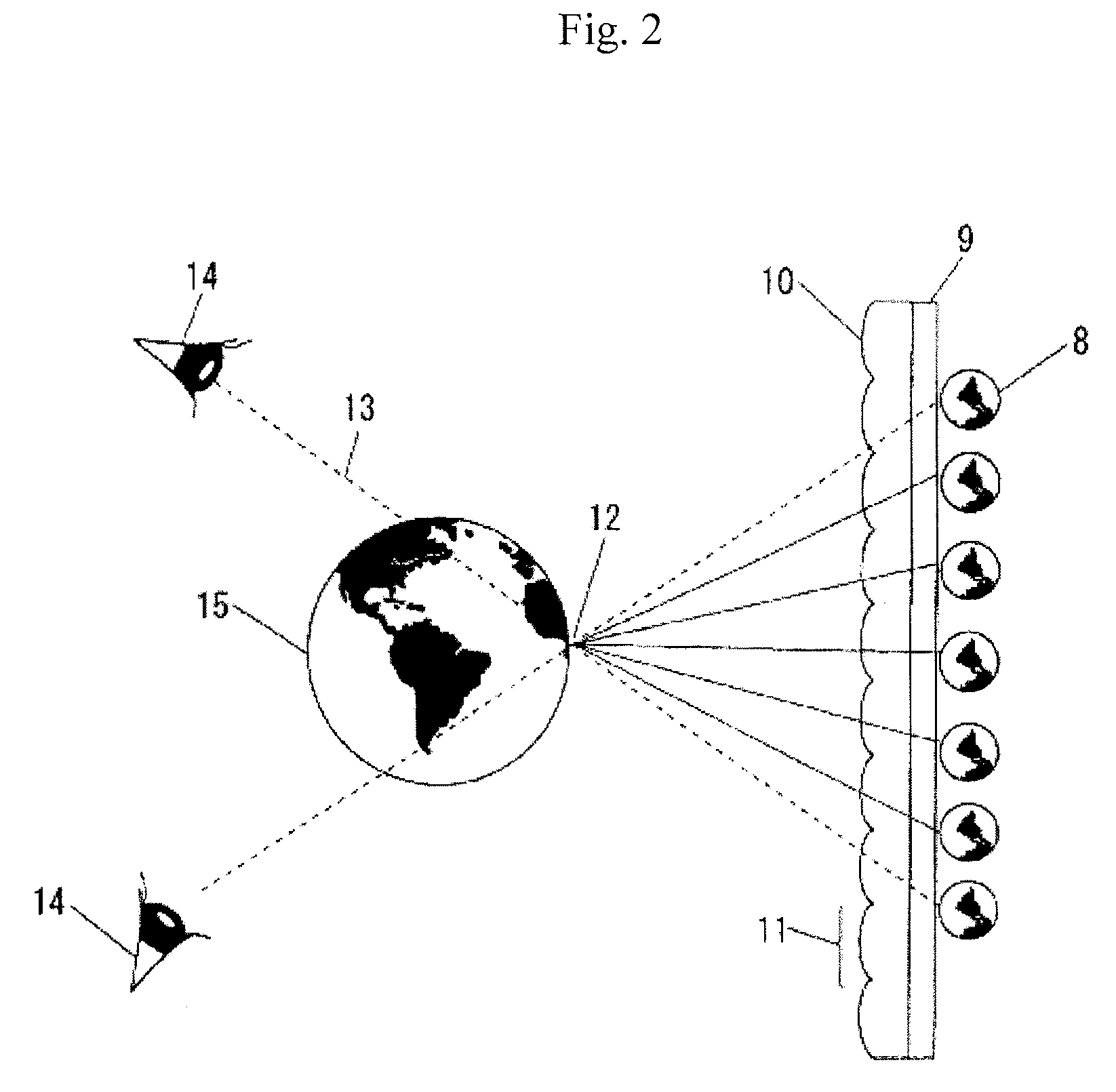Three-dimensional image reproducing apparatus
a three-dimensional image and reproducing technology, applied in the field of three-dimensional image reproducing apparatus, can solve the problems of large-scale apparatus and inconvenience, loss of stereoscopic effect, and optical configuration required to perform conventional stereographs with the naked eye, so as to prevent crosstalk between adjacent lenses or adjacent hologram optical elements, stable stereoscopic image, and avoid distortion or shift of images
- Summary
- Abstract
- Description
- Claims
- Application Information
AI Technical Summary
Benefits of technology
Problems solved by technology
Method used
Image
Examples
first embodiment
[0032]FIG. 1 is a view showing a configuration for preventing crosstalk by a difference in polarizing characteristic; namely, the principal part of a three-dimensional image reproducing apparatus of a first embodiment of the present invention. In the first embodiment, a configuration for preventing crosstalk between adjacent lenses is described.
[0033]Specifically, the first embodiment shows a configuration for preventing a crosstalk between adjacent lenses. In the configuration, a plurality of images each of which has a different parallax information provided on a focus plane of the array of lenses so that a polarized characters of a ray from each of the images are different from each other in order that the ray passes through corresponding one of the optical elements, and a polarizing plate provided on an emitting side of the optical elements and having a polarized character which is different on the adjacent optical elements and same on the next adjacent optical elements.
[0034]In ...
second embodiment
[0060]FIG. 5 is a view showing a configuration that prevents crosstalk by use of two plane-convex lenses; namely, the principal part of a three-dimensional image reproducing apparatus of a second embodiment of the present invention. The second embodiment shows an example configuration for preventing crosstalk among lenses.
[0061]As shown in FIG. 5, two plane-convex lenses 21 and 22 are configured such that convex sides are oriented to the outside. Thus, a view angle is broadened by the combination, and hence occurrence of crosstalk can be prevented.
[0062]An acrylic resin, polyethylene terephthalate, an episulphide resin, and the like, can be used as a material for the two plane-convex lenses 21 and 22. However, the following difference exists between the plane-convex lenses.
[0063]The curvature radius of the convex lens of one of the plane-convex lens 21 which is facing to the two dimensional image 20 including parallax information is smaller than that of the other plane-convex lens 2...
third embodiment
[0067]FIG. 6 is a view showing a configuration that prevents occurrence of crosstalk by use of an integrated waveguide; namely, the principal unit of a three-dimensional image reproducing apparatus of a third embodiment of the present invention. The third embodiment shows an example configuration for preventing occurrence of crosstalk between lenses.
[0068]As shown in FIG. 6, an integrated waveguide 23 is positioned in close contact with the two-dimensional image 3 including parallax information so as to direct the two dimensional image 3 to the principal point of the lens 1. Accordingly, as the adjacent lenses 1 are optically separated, crosstalk is prevented.
[0069]The integrated waveguide 23 is made of a visual field limitation film or glass fiber, thereby making it possible to more efficiently, optically separate adjacent lenses.
[0070]According to the third embodiment, occurrence of crosstalk between lenses can be prevented. Hence, an image that should not be originally displayed ...
PUM
 Login to View More
Login to View More Abstract
Description
Claims
Application Information
 Login to View More
Login to View More - R&D
- Intellectual Property
- Life Sciences
- Materials
- Tech Scout
- Unparalleled Data Quality
- Higher Quality Content
- 60% Fewer Hallucinations
Browse by: Latest US Patents, China's latest patents, Technical Efficacy Thesaurus, Application Domain, Technology Topic, Popular Technical Reports.
© 2025 PatSnap. All rights reserved.Legal|Privacy policy|Modern Slavery Act Transparency Statement|Sitemap|About US| Contact US: help@patsnap.com



